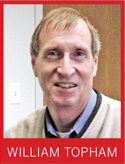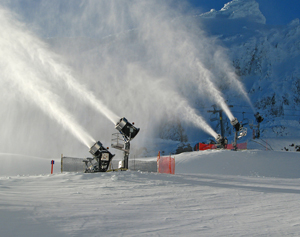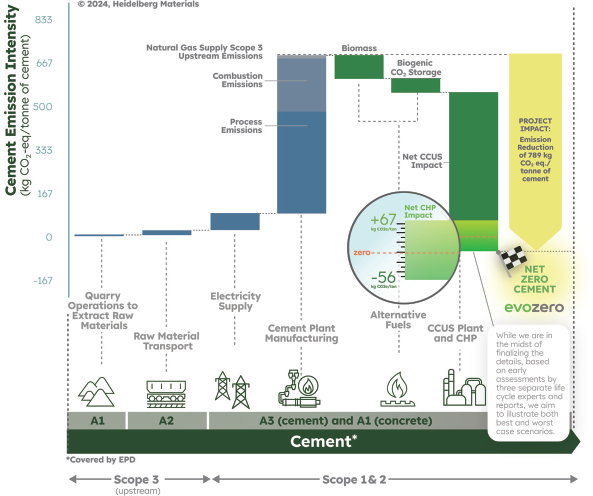January/February 2017
Communities: Industry
Passion for Powder
As an engineering student at Purdue University in the early ’70s, NSPE member William Topham, P.E., took a break from his studies that changed the course of his life forever.
 “I decided to take the winter off and go skiing,” he remembers. “So I applied for a job at Boyne Highlands, which is one of the premiere ski resorts in Michigan.”
“I decided to take the winter off and go skiing,” he remembers. “So I applied for a job at Boyne Highlands, which is one of the premiere ski resorts in Michigan.”
An experienced skier, Topham got the job and spent the winter as part of the resort’s ski patrol, those at mountain resorts responsible for safety, accident prevention, emergency rescue, and medical services. Topham also met Jim Dilworth, P.E., who would become the student’s mentor on a career path he had never considered.
“We just hit it off,” Topham says. “He encouraged me to finish my education and offered me a full-time job when I did that.”
That first full-time job as an engineer would eventually lead to Topham taking over for Dilworth as Boyne Highlands’ area manager in 1977, but not before being part of the original design team with Boyne resorts that developed the world’s first fan-powered snowmaker. Prior to this design, snowmaking was done with a pipe system that used high-pressure compressed air.
 “That type of snowmaking required large volumes of compressed air,” Topham explains. “A typical snow gun would use 300 or 400 cubic feet per minute (CFM) of compressed air, and 400 CFM is about 100 horsepower. You might have multiples of these snow guns all over the ski slope, so you’re talking very, very large horsepowers.”
“That type of snowmaking required large volumes of compressed air,” Topham explains. “A typical snow gun would use 300 or 400 cubic feet per minute (CFM) of compressed air, and 400 CFM is about 100 horsepower. You might have multiples of these snow guns all over the ski slope, so you’re talking very, very large horsepowers.”
The system developed by the Boyne team, on the other hand, uses a ducted fan to propel water into the atmosphere, where it freezes, duplicating the way the icy precipitation occurs in nature. Interestingly, this idea was inspired by the chemical sprayers used in orchards.
“Oftentimes when an orchard was spraying chemicals, when they had freezing temperatures, they would actually create a little frost,” Topham explains. “They weren’t trying to make snow by any means and it wasn’t very good, but they were seeing that sometimes the ground would get white.”
With help from researchers, Topham and the rest of the team spent several winters working on a more efficient snowmaker based on what they saw in the orchards. The result was the ducted fan design, which uses only a small amount of compressed air to generate ice crystals that mix with the water to start the freezing process.
“It reduced the horsepower from 100 horsepower, in some cases, down to 10 to 15 horsepower,” Topham says. “It was much more energy efficient.”
Helping to design a new snowmaker now used around the world isn’t the only highlight of Topham’s 40-year career. In 1984 he took on the role of general manager for a new resort, building it from the ground up. At Sylvan Resort, now Treetops Resort, he supervised the construction of ski facilities, a Robert Trent Jones Sr. 18-hole golf course, a 172-room deluxe hotel and restaurant, and the resort’s entire road, water, and sewer infrastructure.
“It was a five-year whirlwind—seven days a week, 16 hours a day,” Topham remembers. But he couldn’t pass up the opportunity to decide how things were done and where they would go for an entire resort.
Topham also went on to work for SMI Snowmakers, an engineering firm and global supplier of snowmaking machines. He spent the rest of his career there as general manager until his recent retirement.
“Besides being a manufacturer, we also provided design engineering services for ski areas around the world,” he says. “So in addition to running the day-to-day operations of the business, I was working on system design and working with customers all over the world.”
Topham also had the honor of doing work for the winter Olympics while with SMI, which has performed work for the winter games for many years.
Looking back on his career, Topham is grateful to have ended up in an industry he loves and that gave him so many opportunities.
“Right out of college I got a lot of responsibility really, really fast—to the point where at 29 years old I was managing a major resort complex,” he says. “That probably wouldn’t happen in another industry at that age.”
And even though he’s retired, he also gets to enjoy everything he helped to build when he hits the slopes, just like he did in the ’70s when he decided to head to the mountain at Boyne Highlands for the winter.


 Volunteering at NSPE is a great opportunity to grow your professional network and connect with other leaders in the field.
Volunteering at NSPE is a great opportunity to grow your professional network and connect with other leaders in the field. The National Society of Professional Engineers (NSPE) encourages you to explore the resources to cast your vote on election day:
The National Society of Professional Engineers (NSPE) encourages you to explore the resources to cast your vote on election day:


